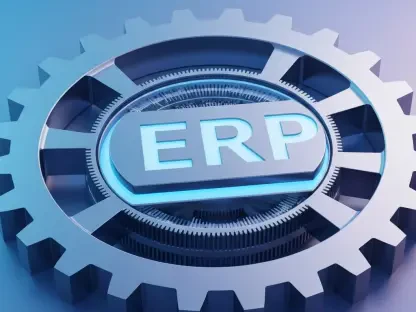In our latest conversation, we delve into AWS’s recent shift in pricing strategies for CloudWatch logs in Lambda. Our expert, Anand Naidu, known for his prowess in both frontend and backend development, joins us to shed light on how these changes may benefit enterprise users and influence their logging practices. Anand discusses the intricacies of the new tiered pricing model, compares it with previous rates, and explores its implications on AWS’s other services.
What prompted AWS to change the pricing structure of CloudWatch logs for Lambda?
AWS recognized the increasingly high volumes of data being generated by enterprise users, which necessitated a more cost-effective pricing structure. The change aims to provide these users with substantial savings, thereby enhancing the feasibility of comprehensive logging practices without overwhelming costs.
How does the new tiered pricing system compare to the previous flat rate?
The tiered system introduces a step-down approach when it comes to data volumes, which contrasts the earlier uniform flat rate. The previous model was straightforward but didn’t offer discounts for high-volume users, whereas the new system allows costs to decrease with increased usage, rewarding those who need extensive data monitoring.
Can you explain the different tiers in the new pricing structure for Vended logs?
Certainly! The Vended logs, formerly known as Standard logs, start with the highest rate, which then reduces as usage grows. Users pay $0.50 per GB for the first 10 TB per month, $0.25 for the next 20 TB, $0.10 for the next batch of 20 TB, and finally $0.05 for the next 50 TB. This structure incentivizes larger data consumption with progressively lower costs.
How does the tiered pricing for Infrequent Access logs compare to the previous pricing?
Infrequent Access logs are now offered at nearly 50% less cost than before. Starting at a flat rate of $0.25 per GB, users can now benefit from the same tiered approach: $0.25 per GB for the first 10 TB, $0.15 for the next 20 TB, $0.075 for the next 20 TB following that, and $0.05 for the subsequent 50 TB.
What cost advantages does the new pricing model offer to high-volume enterprise users?
High-volume users can significantly lower their expenses through these sliding scale structures. As their logging volume increases, the corresponding cost per GB decreases. This dynamic pricing makes large-scale, comprehensive logging financially sustainable.
How might these pricing changes impact enterprises’ logging practices?
These changes encourage enterprises to adopt more extensive and detailed logging approaches, as cost will no longer be a prohibitive factor. As a result, businesses can achieve deeper insights into their applications’ performance which can drive improved operational efficiencies and issue resolutions.
Could you elaborate on the types of logs offered under CloudWatch logs?
CloudWatch offers three primary classes: Vended logs, Infrequent Access logs, and CloudWatch Logs Live Tail. Vended logs handle the bulk of typical operational log activity, Infrequent Access caters to logs that are accessed less often, and Live Tail offers real-time streaming capabilities for times where instant log feedback is critical.
Were there any pricing changes made to CloudWatch Logs Live Tail?
No, CloudWatch Logs Live Tail did not experience any pricing changes. It continues to function under its existing pricing model, keeping its current accessibility for enterprises requiring real-time log interaction.
Besides CloudWatch, where else can developers store Lambda-generated logs?
Developers now have the option to store Lambda-generated logs in Amazon S3 and Amazon Data Firehose. Both options adopt a tiered pricing identical to the newly established system in CloudWatch, offering flexibility and cost efficiency for data storage.
Is the tiered pricing for Amazon S3 and Amazon Data Firehose logs identical to that of CloudWatch logs?
Yes, the tiered pricing replicates the structure seen with CloudWatch logs. Users will face similar cost reductions as their log volumes increase, offering a cohesive pricing strategy across different AWS services.
How does the support for logs in Firehose benefit enterprises?
By integrating with Firehose, enterprises can seamlessly deliver their logs to additional storage solutions or third-party tools. This funneling capability optimizes workflows, enabling more efficient data management and analysis across various platforms.
Are there any new capabilities added to AWS’s finance management tool, Budgets, relevant to these changes?
Yes, AWS’s finance management tool, Budgets, has introduced new cost metrics and filtering capabilities. These additions allow enterprises to tailor their expenditure monitoring more precisely, setting custom thresholds that can keep costs in check amidst these pricing changes.
How do these updates relate to other recent AWS service developments, such as those in Amazon Bedrock?
These changes correspond with broader efforts to streamline and enhance AWS offerings, such as the updated Data Automation capability in Amazon Bedrock, which simplifies handling and deriving insights from unstructured data. Together, these advancements underscore AWS’s commitment to reducing operational costs and boosting enterprise efficiencies.
What challenges might enterprises face when adapting to these new pricing structures and storage options?
Adopting new pricing models might require enterprises to adjust their budget forecasts and analytics tools. They may also need to reassess which logs are crucial and how they handle data storage. This transition can initially seem complex but promises long-term benefits.
How do the new pricing structures promote the use of third-party observability tools?
By lowering the cost of log access and transport, enterprises can consider leveraging third-party tools for enhanced application observability. Such flexibility supports wider use of analytics and monitoring solutions, which can enrich insights beyond AWS’s ecosystem.
What is your forecast for these changes?
I foresee enterprises embracing these changes eagerly due to the cost efficiencies offered, leading to more robust logging practices that stimulate better application performance tracking. Over time, the lowered barrier costs may also enable smaller businesses to adopt sophisticated monitoring capabilities that were previously out of reach.









